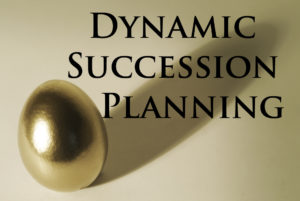While 78% of business owners said protecting the business was their highest long term priority, only 34% had a robust documented succession plan in place.
PWC 2023 US Family Survey
succession planning
Recent studies show that every year for the next 50 years, over $1 trillion will pass from one generation to the next generation.
There are an estimated 32.5 million family owned businesses in the U.S. and it is further projected that in the next 5-10 years, 40% of these businesses will transfer control to the next generation.
Sadly only 30% of those businesses passed on to the second generation of owners and 10% of those businesses passed on to the third generation of owners will succeed. The rest will fail in some way, many of them actually shutting down.
With succession planning you can only be one of three: success, statistic or selfish. Let’s take them in reverse order.
This is the do nothing owner. This is a position that says, let the “chips fall where they will”. Doing nothing allows others to decide the fate of your business instead and these decision makers are lawyers, creditors, bankers maybe even bankruptcy court. Why selfish? You leave behind all who worked hard for you, believed in you and trusted your management skills to do what is right including family, partners, co-workers, employees, customers and creditors.

selfish
If you keep your current plan, you run the risk, and a high risk, of being part of the 70%-90% of businesses that fail to make a successful transition. Does this mean the business will fail – not necessarily, it may take years for that to happen and if it doesn’t happen it’s because there was a lot of pain and hardship to make it right. Defining failure is subjective and can be less than total business closure.
This choice is letting things happen by default

statistic
“Complete and uninterrupted passing of management, satisfactory ownership buyout with funding at reduced costs and risks and the satisfaction that the hard work and risk taken while owning a business can be translated into a comfortable retirement with funds to help give back. All of this is done without sacrificing the business’s financial needs.
This choice is letting things happen by design.

success
so which one do you want to be?
If selfish, thanks for visiting and good luck and please disclose this to family, friends and employees.
If statistic, we wish you well and “hope” you make it to whatever you define as success and we only hope the business can survive.
If success, you need to find out how to not only avoid being a statistic, but how to be a success.

being a success
dynamic succession planning
Why a new system? Isn’t the current system sufficient – working good enough? In a word – NO.
For years, the planning process started with the business owner and his/her needs and then jumped, almost immediately to the buy-sell agreement, a document that governs the succession plan and the triggering events. Those triggering events being death, disability, retirement or the sale of the business. Without including the business itself, and its needs, at the beginning of the process, the failure rate ticks upward.
A succession plan has two distinct components. One if the choice of passing on the governance of the operation – i.e. who will run the business. The second is the issue of how those currently running the business will exit – i.e. the financial part of succession*. The two are EQUALLY important and go hand in hand. When either aspect is not handled properly, success in succession cannot be achieved. This is, in part, why family generational succession rates are so dire.
While experts indicate one of the prime reasons for generational succession failures is poor communications or family dynamics, in all my years in business I have never known a company to fail due to communication or family dynamics. In almost all cases it fails because it runs out of money and resources.
Is it a wonder why less that 30% of family businesses and an equal number of non-family businesses never succeed successfully To be successful all three segments need to he fully engaged.
*The initial Dynamic Succession Plan focuses on the financial part of succession; it presupposes a managerial plan for succession is already underway. It sets in motion the financial plan while new management is being groomed. The governance can be an added component of Dynamic Succession Planning or part of the CFO System.
What is Dynamic Succession Planning?
Dynamic Succession Planning is a three segment, three phase system that is designed to create greater enterprise value, reduce the risk of short term and long term succession failure and a better planning system to avoid becoming a business statistic. This system includes a focus on the needs of the business, a key element left out of today’s succession planning.
The Segments are Enterprise, Valuation and Shareholder. The phases are: Analysis and Valuation, Preliminary Plan and Sustainability Analysis and Final Plan and Risk Tolerance.
Does Dynamic Succession Planning Work?
While nothing in business is absolute, this system has been successfully used for over 30 years. This system has been proven both in the affirmative and the negative. Businesses given the process enough time, enough resources and management and owners that follow the directives of seasoned professionals, have results from a system that is nearly foolproof.
Businesses that have elected to use only certain recommendations or ignored certain risks, skipped certain steps and/or did not continue to monitor the plan have in a word – failed, both in reality, that is, being out of business, and also by not achieving business goals and personal goals of shareholders (also failures).
When used correctly, the plan grooms succession managers while constantly adjusting the financial part of succession; a winning strategy for both new management/ownership and exiting owners.